Brazilian name: Saí-verde

The Green Honeycreeper is found from southern Mexico to the Amazon Basin with a disjunct population in south east Brazil. See the distribution map at Birdlife International.
It favours forest and secondary woodland, normally high in the canopy but it comes out in clearings and forest edges.
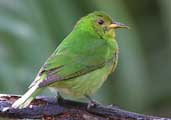
They are found singly or in pairs and often in a mixed honeycreeper-tanager flocks. The male in photos 1 and 4 belongs to the nominate sub-species C. s. spiza and was at a fruiting tree on Cristalino Lodge in a mixed flock with Blue Dacnis Dacnis cayana, Yellow-bellied Dacnis Dacnis flaviventer and Black-faced Dacnis Dacnis lineata.
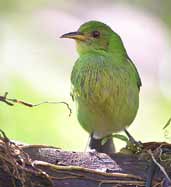
The female is apple green in colour with darker wings and straw yellow on the throat and on the belly. The bill is slightly decurved and is yellowish below. The iris is reddy-brown. In this particular flock, it could have been confused with the many female-plumaged Blue Dacnis until one noticed the distinctive bill and the lack of blue on the head..
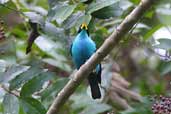
The birds in photos 5 to 7 are of the sub-species C. s. axillaris found in eastern Brazil which is slightly greener than the nominate sub-species seen in photos 1 and 4 which itself differs from the even bluer sub-species that are found in Colombia, Ecuador, Peru and Bolivia. In contrast photos 10 and 11 from Honduras are of the sub-species C. s. guatemalensis where the male, photo 10, is significantly greener than the other males.
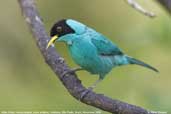
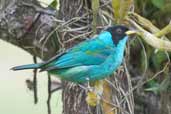
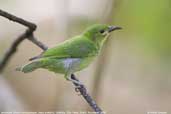
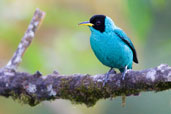
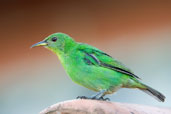
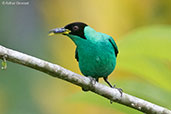
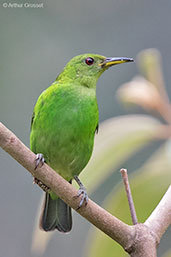
| Previous Page | Back to Index | Next Page |